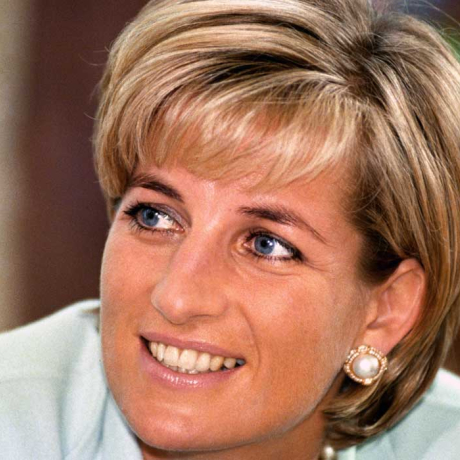A tribute to Diana, Princess of Wales, who died at age 36 on August 31, 1997. She was a replacement child.
What are the complications and consequences for the child who is expected to replace someone but is not the child that was expected or wanted? I will look at the biography of Lady Diana, Princess of Wales, from the perspective of her being born as a replacement child. Early childhood experiences play a significant role in shaping our adult life.

Diana’s sense of being inadequate as well as her unconscious attraction to partners who resonated with her unhealed attachment wounds shaped her relationships, and contributed to her emotional struggles. Understanding the influence of these early experiences is crucial in analyzing and understanding the complexity of our own lives as well as Diana’s.
Our choices are often influenced by our unconscious, by processes of which we are not aware. This is evident in the life of Diana Spencer, who would later become Princess Diana. From the moment of her birth, Diana was burdened with the weight of her family’s expectations and disappointment.
Diana was her mother’s fourth pregnancy, who had a sense of a social obligation to produce a boy who would replace her infant son who had died when only 10 hours old. Her distraught mother had not been allowed to hold or even see the infant, although she had desperately wanted to do so. Diana was born 18 months later to a still grieving mother, and a disappointed father. Her family had desired a male heir to carry on the family’s noble lineage.
The family was so unprepared for the arrival of another daughter, that they did not have a name for her until a week later. She was finally given the name Diana Francis, a combination of her mother’s name and the name of a distant relative. Diana Francis Spencer became known as Lady Diana after her father, John Spencer, Viscount Apthorp inherited the title of Earl of Spencer in 1975.
Her arrival as the third daughter added stress to an already strained marriage; the Viscountess Spencer was made to feel inadequate when, only in her early 20s, she was sent off to various doctors to see why she was unable to ‘produce’ a healthy son.
Though very young, Diana understood early on that the added tension in the family was due to the lack of a male heir and she felt guilty about the added strain on her parent’s marriage caused by her birth. Her arrival was meant to be a solution to the family’s problem but had only served as a painful reminder to their loss. Subsequently, she suffered from a lack of self-esteem, guilt, for being born a female. In the book Diana Her true story – in her own words, by Andrew Morton, she speaks about her feelings of inadequacy.
“ I couldn’t understand why I was perhaps a nuisance to have around which, in later years, I’ve perceived, as being part of the [whole question of the] son, the child, who died before me was a son and both [parents] were crazy to have a son and heir and there comes a third daughter. What a bore, we’re going to have to try again. I’ve recognize that now.“
Apparently, the “mistake“ would have to be rectified with another pregnancy.
Three years after Diana‘s birth, Charles Edward Maurice Spencer was born. When Diana was seven years old, her mother abruptly left the family to be with another man. What followed was a bitter divorce and contentious child custody battle. Diana‘s father was awarded custody of all four children.
With the two older sisters away at school Diana became like a mother to her younger brother, Charles. As if woven into a psychological triangle with John, the brother, who had not survived, Diana and Charles would often visit his grave, wondering what he would have been like, and, if either would have been born were it not for John’s tragic death. In Diana’s mind, her brother’s grave stone with its ‘In Loving Memory’ epitaph was a permanent reminder that, as she later recalled in her biography,
“I know I was the girl who was supposed to be a boy.“
Diana and her brother Charles travelled long distances by train to see their estranged mother; they navigated their childhood with the ever-changing caretakers, and later a difficult stepmother.
Diana excelled athletically and was an accomplished pianist and dancer. She aspired to be a ballet dancer. The stage provided a medium to be seen and recognized for her own accomplishments. Regrettably, her tall stature, 5 feet 10 1/2 inches, ultimately brought an end to that dream. Her accomplishments did little to alleviate her deep seated insecurities. She constantly compared herself to her academically successful siblings and described herself as “thick as two planks“ after failing her exams. Her feelings of inadequacy stemmed from her early experiences of being seen as a disappointment and not living up to her family’s expectations.
Unconsciously, it seems, Lady Diana then chose a partner who resonated with her unhealed attachment wounds. Prince Charles was despondent after having lost his revered uncle, Lord Mountbatten, who was his mentor and like a second father to him. While his significant loss triggered familiar feelings of abandonment and loss for Diana, her heightened sense of empathy, developed through her own childhood experiences, drew her close to Charles. An unconscious attraction to a partner with similar traits is a common pattern in individuals with unresolved trauma.
Diana’s marriage to Prince Charles would soon leave her feeling again like a mistake. Just as with her birth, she was brought into the marriage to fulfill a family obligation. Ironically, she fulfilled that obligation with the birth of two sons. However, she found herself disempowered and trapped in an unfulfilling marriage, mirroring her mother’s experience. This marriage stirred up, deep-seated feelings of abandonment, and rejection, which she had first experienced as a replacement child.